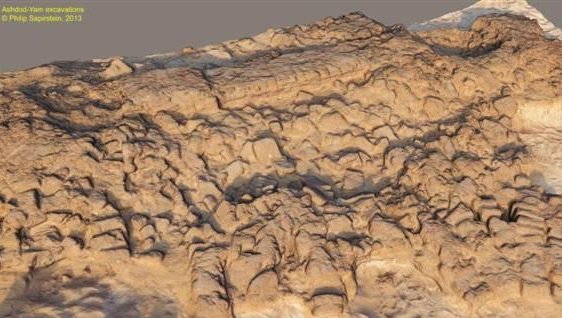The discovery was announced at the end of the first excavation season at Ashdod-Yam in the contemporary coastal city of Ashdod, just south of Tel Aviv where Fantalkin is the leader of the dig.
Investigators found a mud-brick wall measuring over 12 feet wide and 15 feet high at the heart of the fortification. The wall was reportedly covered in layers of mud and sand.
The barricade, allegedly built in the 8th century B.C., would have defended an inland area of more than 17 acres.
Tel Aviv University claims the fortification dates back to the time in the 8th century B.C. when Assyrian King Sargon II ruled the entire southeastern part of the Mediterranean basin, including Egypt and the Middle East. According to inscription, a Philistine king in Ashdod, named Yamani, once tried to organize a revolt against the Assyrian Empire, and they responded by taking control of Ashdod in 711 B.C. and late destroyed the city.
Consequently, power shifted to the area of Ashdod-Yam where the current excavation was found.
According to Tel Aviv University, the wall could have been built before or after the Ashdod rebellion ended, at the request of either the local defenders or the Assyrians.
Israeli archaeologist Jacob Kaplan concluded that the fortification was built in anticipation to the attack based on earlier excavations. Fantalkin, however, disagrees claiming the constructions seems too monumental to have been made under such circumstances.















